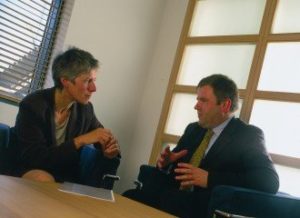Many years ago, I read this brilliant paper by Daniel White in Research-technology Management, Sept/Oct 1996, which pointed out that the most effective management style for encouraging effective innovation is to provide ‘Autonomy, Support and Guidance’.
 If you manage scientists or engineers and want to foster their creativity this is the paper to read. It’s also a good one to give your manager, if you want to help her/him do a better job at helping your own creativity!
If you manage scientists or engineers and want to foster their creativity this is the paper to read. It’s also a good one to give your manager, if you want to help her/him do a better job at helping your own creativity!
It’s based on four years research by organisational psychologists, and points out that “coaching dialogues” are much more effective than the “command and control” style that managers so often drift into, particularly when they’re worried that a project is going wrong.
Autonomy is a critical aspect of creativity, but all too often I see managers who oscillate between providing far too much autonomy, or far too little. Initially the employee is given an inadequate brief, and abandoned to get on with it. Very occasionally this will work, but it’s a risky strategy.
The manager then reappears, panics and starts micro-managing, which of course completely kills every hint of creativity. The project then fails, and the employee (or sometimes even the whole department) is deemed “not creative” and managers become even less inclined to trust them to come up with good ideas.
To avoid this vicious circle
- don’t leave your employees to work totally alone, but take an interest.
- take the time to give them a good brief at the beginning, so they know what they’re actually expected to be creative about
- keep up their morale by being supportive, and use your experience and contacts to help guide their search for a solution. But don’t take over.
- don’t assume you know best (even if you do) but rather try to coach and guide them to the point where they’ll discover new insights and ideas.
It’s very productive using open questions, for example “so what is this data telling us?” or “what ideas would it stimulate if cost wasn’t an issue?” If, as a manager, an employee has come up with an idea that’s truly dreadful, being supportive doesn’t mean that you need to lie and say “yes that’s a wonderful idea”. Instead you can say things like “I think you’re absolutely right to be looking for a solution to problem XYZ, but let’s look harder at how to make it work, given problems A,B,C”
If you read Daniel White’s paper and focus on providing “autonomy, support and guidance”, you won’t go far wrong.
Written by Anne Miller for R&D Today
https://annemiller.eu/ ref 15811. (c) Anne Miller 3/5/16 [email protected]

